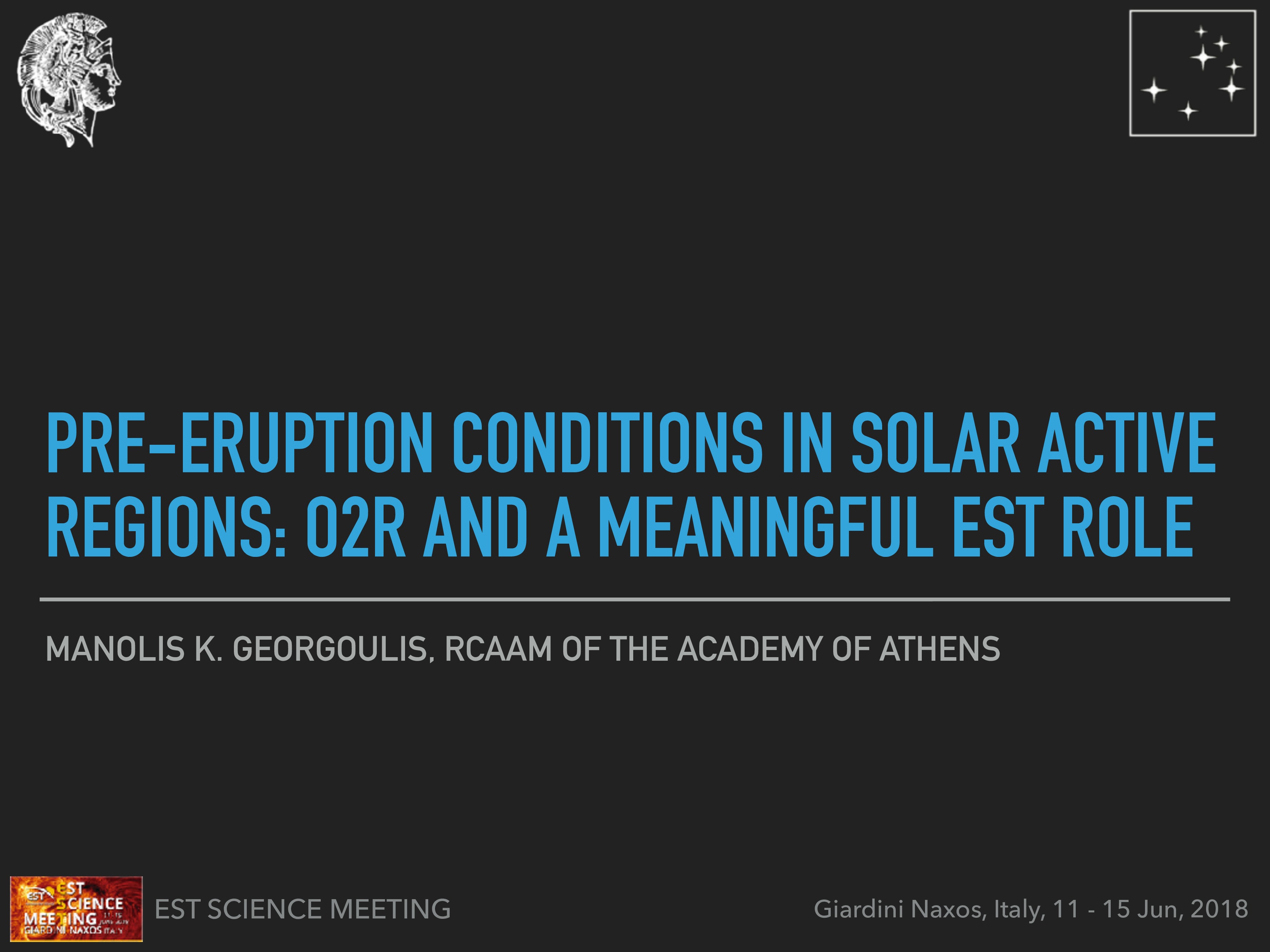Pre-Eruption Conditions in Solar Active Regions: Operations-to-Research and a Meaningful EST Role
Affiliation
RCAAM of the Academy of Athens, Athens, Greece
Main category
Natural Sciences (Astrophysics and Astrononmy)
Abstract
Understanding the physics of solar eruptive activity is a key pursuit of solar physics that continues unabated for at least half a century. Over the past two decades, however, solar eruptions are studied from an additional angle, aiming to generate the necessary operational knowledge to predict them. This has been dictated by recent, vivid interest in space weather forecasting. Moving from understanding to forecasting is a paradigm of research-to-operations (R2O), via which one builds comprehensive databases of quantitative parameters of solar active regions at various stages prior to eruptions. Ranking these parameters in terms of forecasting significance enables another, equally meaningful, step, namely that of operations to research (O2R). In this action, one focuses on the best performing parameters to understand the physics of their (absolute or relative) success. The EU FLARECAST project has managed to collect more than a hundred solar flare (and coronal mass ejection) predictors for each of tens of thousands solar photospheric magnetograms acquired by the Helioseismic and Magnetic Imager (HMI) of the Solar Dynamics Observatory (SDO). With a number of ranking exercises complete, we single out a few of these parameters, whose physics and ramifications for the active-region photosphere and the photosphere-chromosphere coupling we present and discuss. This physics can be boosted from future, ultra high-resolution observations that EST will obtain at high cadence. Therefore, among its other objectives, EST can use existing knowledge to fine-tune its scientific targets, aiming to break ground on the understanding of solar eruptions, potentially even identifying and observing their actual trigger(s). The question of the existence, or lack thereof, of unambiguous eruption precursors is also one of central importance, which EST could successfully put to rest.
Further reading
-- Georgoulis et al., 2012, ApJ, 761, 61 (DOI: 10.1088/0004-637X/761/1/61)
-- Georgoulis, 2018, in Electric Currents in Geospace and Beyond (AGU Monograph Series 235) (DOI: 10.1002/9781119324522.ch22)
Do you have problems viewing the pdf-file? Download presentation
here
If the presentation contains inappropriate content, please
report the presentation. You will be redirected to the landing page.
